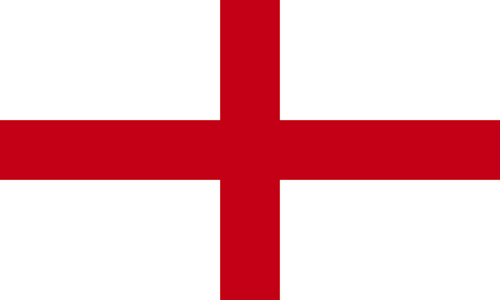
Image Credit: Wikipedia
As I was perusing the new Harry Ransom Center exhibit, The King James Bible: Its History and Influence, I couldn’t help but linger over the first edition’s title page. The image is gorgeous and what one would expect from King James I’s own printer, Robert Baker. It features Moses and Aaron flanking the title, with the four Evangelists around the corners. Above them, the remaining Apostles are depicted, each holding the various symbols that are associated with their individual iconographies. Of these figures, the one that caught my eye was St. Andrew. Prominently on top of the title page, St. Andrew’s saltire is much larger than any of the other objects that the various figures are holding. To a certain extent, its largeness is obvious and expected given that it’s a slightly rotated crucifix. But one can’t but help also thinking about why St. Andrew might have been given special primacy here. After all, this was a Bible commissioned by King James.
Ask any Scottish person about the union of England and Scotland, and they will proudly tell you that Scotland conquered England. In 1603, King James VI of Scotland succeeded the last Tudor monarch, Elizabeth I, to the throne of England (thus becoming King James I). James VI of Scotland was the great-grandson of James IV and Margaret Tudor, and at the time of Elizabeth I’s death, he was determined the only acceptable heir to the thrown. All of this can be seen in the United Kingdom’s flag (below), which has flown over the island ever since James I came to the thrown (with the exception of the further addition of St. Patrick’s Cross after the Act of Union 1800, when Ireland became a part of the United Kingdom). Prior to the Union, Scotland’s flag featured St. Andrew’s Cross in white on a blue background (see below). The English flag featured St. George’s cross in red on a white background (see below). These two were combined on James I’s accession, and result in the iconic Union Jack that we see everywhere today.



Image Credits: Wikipedia
So it should not be surprising that St. Andrew and his saltire are featured prominently on the top of the King James Bible’s title page, even when one considers how rarely St. Andrew is figured prominently in iconography. He is featured here because a Scottish king commissioned this Bible. With this in mind, as I further looked at the title page, I began to wonder who the other Apostles at the top of the title page were, and whether or not there was any significance in their placement. Opposite St. Andrew, holding a sword, is St. Paul. It shouldn’t be surprising that he’s featured prominently, given that he’s long been the patron saint of London. Behind him, holding a chalice, is John the Apostle. Historically, John the Apostle’s been considered a patron of booksellers, so there’s no doubt the King’s printer worked to get John near the top. Between John the Apostle and St. Andrew is hidden St. Thomas, cast in shadow for his reluctance to believe in Jesus’ resurrection. St. Thomas holds an architect’s tool because it is believed he established the first church in India. I wonder if his placement is due to the fact that the King James Bible was published just as the United Kingdom was gaining a foothold in India.
The views expressed herein are strictly those of viz. blog and not the Ransom Center. The King James Bible exhibition will continue at the Ransom Center through 29 July, and those in the Austin area encouraged to attend.




Recent comments
2 years 29 weeks ago
2 years 44 weeks ago
2 years 44 weeks ago
2 years 50 weeks ago
3 years 4 weeks ago
3 years 4 weeks ago
3 years 4 weeks ago
3 years 6 weeks ago
3 years 6 weeks ago
3 years 6 weeks ago